How To Properly Set Up An Equalizer Hitch
Your truck's bones receiver hitch may have the capacity required to tow effectually 8,000 lbs, but that doesn't hateful information technology will be able to deliver the kind of sway command and driving safety you'll need when towing more than 5,000 lbs. This is where a weight distribution hitch comes in – and we want to help people empathize but how important (and easy!) it is to truly, and precisely, distribute the weight of your trailer's heavier load for a smoother and safer towing experience. Those who tow within their load'due south target tongue weight take a huge safety advantage that is hard to overstate, and we wanted to provide a complete guide for proper tongue weight distribution. If towing safely is important to your business or lifestyle then this guide is for you. Allow'due south begin.
What is a Weight Distribution Hitch?
When you have too much natural language weight resting on the center of your hitch, it volition sink down or swoop. This is frequently referred to as a 'squatting hitch'. When this happens, too much weight is removed from the front beam of your truck – and as a result, your truck's braking force and traction will be reduced, making it harder for you to steer and bulldoze straight on the road. 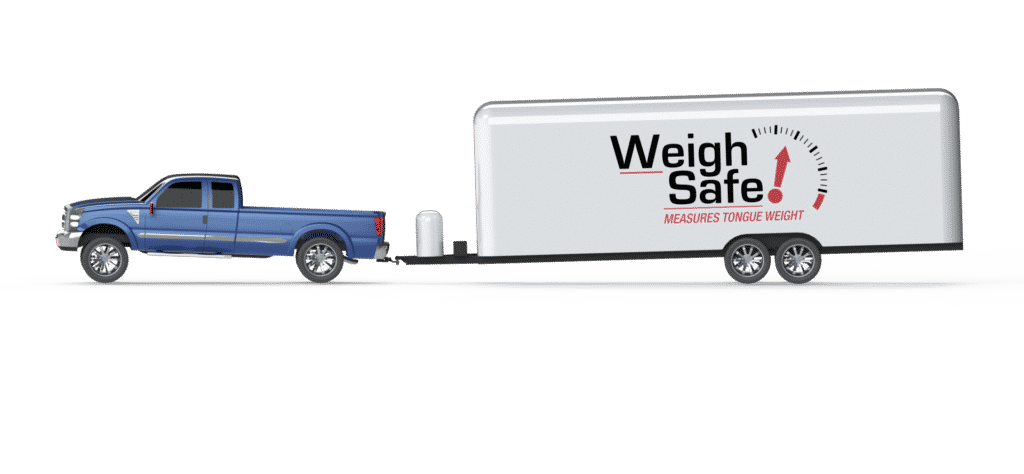 A weight distribution hitch solves this outcome. It uses adjustable jump bars and tension to level things out. Information technology distributes the excess tongue weight forward (to the back axle of your truck), and advantage (to the axles of your trailer). In turn, the lost weight from your truck'due south front axle is restored, and so is your driving control and safety. Check out this video to see how it works!
A weight distribution hitch solves this outcome. It uses adjustable jump bars and tension to level things out. Information technology distributes the excess tongue weight forward (to the back axle of your truck), and advantage (to the axles of your trailer). In turn, the lost weight from your truck'due south front axle is restored, and so is your driving control and safety. Check out this video to see how it works! 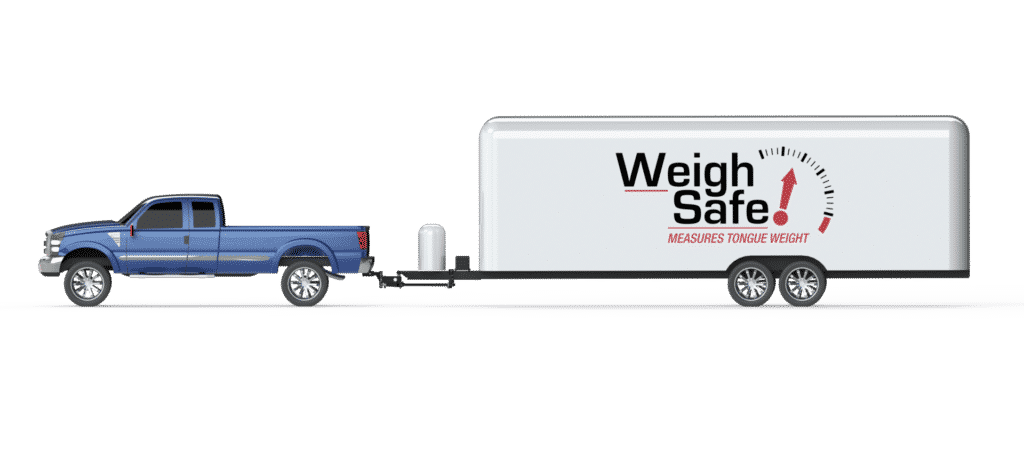 Safe and proper weight distribution involves understanding and calculating your target tongue weight. What is my target tongue weight? What is my gross trailer weight (GTW)? What are trailer brackets? How do you install spring arms? Let's start at the beginning…
Safe and proper weight distribution involves understanding and calculating your target tongue weight. What is my target tongue weight? What is my gross trailer weight (GTW)? What are trailer brackets? How do you install spring arms? Let's start at the beginning…
Do Y'all Need a Weight Distribution Hitch?
Your truck's owner's manual should provide you with specifications regarding weight distribution utilize. For example, the 2018 Chevy Traverse owner'south manual states that weight distribution and sway control are required when towing a trailer over 5,000 lbs. Well-nigh commonly, this applies to heavier cargo trailers such as campers and toy haulers. 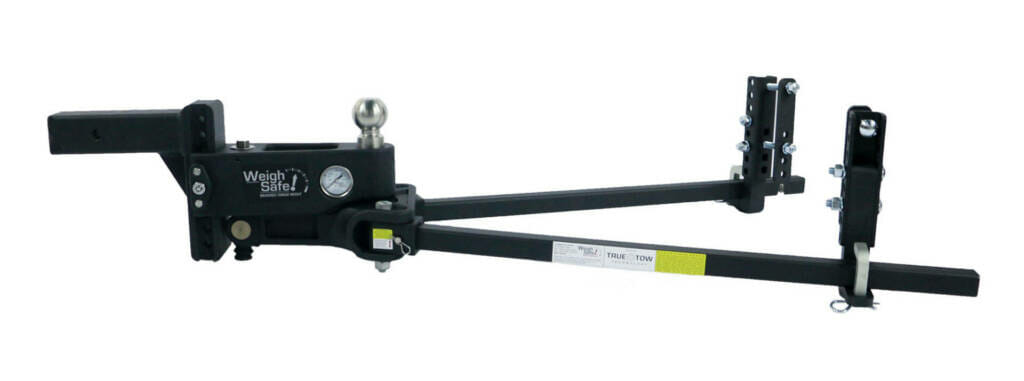 You can too apply this checklist to determine if you need a weight distribution hitch:
You can too apply this checklist to determine if you need a weight distribution hitch:
Indicators You Need A Weight Distribution Hitch:
- Your trailer weight (GTW) is more than l% of your truck'due south weight (GVWR)
- The rear of your truck sags when the trailer is hooked upward
- Yous experience trailer sway
- Your truck'due south headlights signal upward
- You find it difficult to steer or stop
- You want to tow at your truck and trailer'southward highest capacity
Are Y'all Set up to Install A Weight Distribution Hitch?
It is of import to know that while a weight distribution hitch redistributes weight and balances your load, it does NOT increase the total amount of weight that your truck and trailer tin can handle. You should never exceed the capacity of your lowest-rated towing component. Then, before purchasing and installing a weight distribution hitch, ensure that you are abiding by the towing capacities of your truck, trailer and hitch components. If yous need to review how to calculate your exact towing capacity, utilise the formulas we've outlined in our Definitive Guide to Safety Towing .
Leveling Out Your Load Has Never Been Easier or More than Authentic
Installing your weight distribution hitch involves leveling the trailer, measuring your truck and trailer height, mounting the hitch head, and adjusting the driblet length, spring arms and trailer brackets. 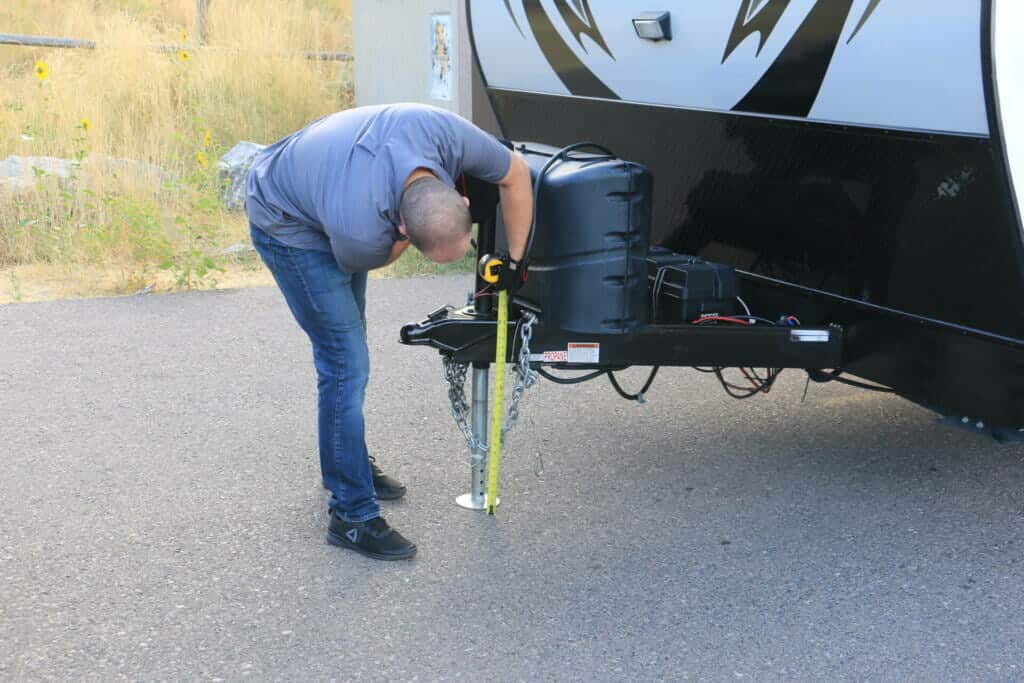 And, most significantly, it involves calculating and verifying the exactness of the weight distribution so that your hitch can truly deliver:
And, most significantly, it involves calculating and verifying the exactness of the weight distribution so that your hitch can truly deliver:
- Even weight distribution (Upwardly-and-down motility)
- Anti-sway stability (Side-to-side move)
- Increased trailer tow capacity
- Better driving control and stability
- Less wear on your truck and trailer
- Safer braking and steering
Redefining Weight Distribution with True TOW
True TOW™ is the first ever weight distribution hitch system that can truly distribute your load with ease, featuring an innovative design that levels out your truck-trailer combination, while actively keeping your trailer from swaying. 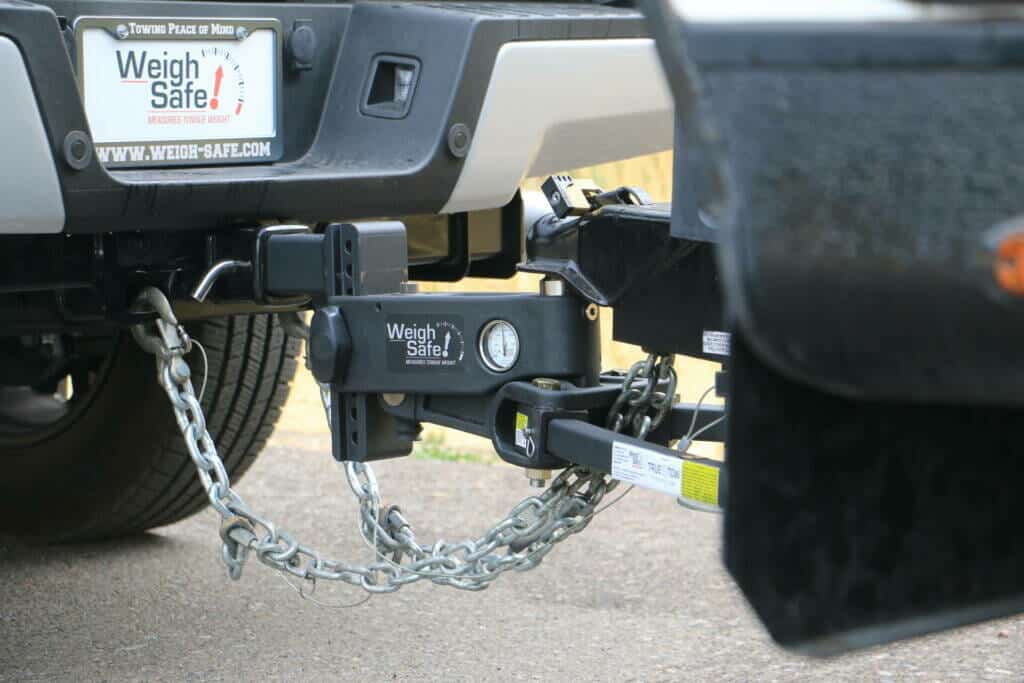
What makes it and then easy and authentic?
A Built-in Calibration :
- measures tongue weight (TW) and distributed tongue weight (DTW) to ensure you've gear up your distributed system with exactness
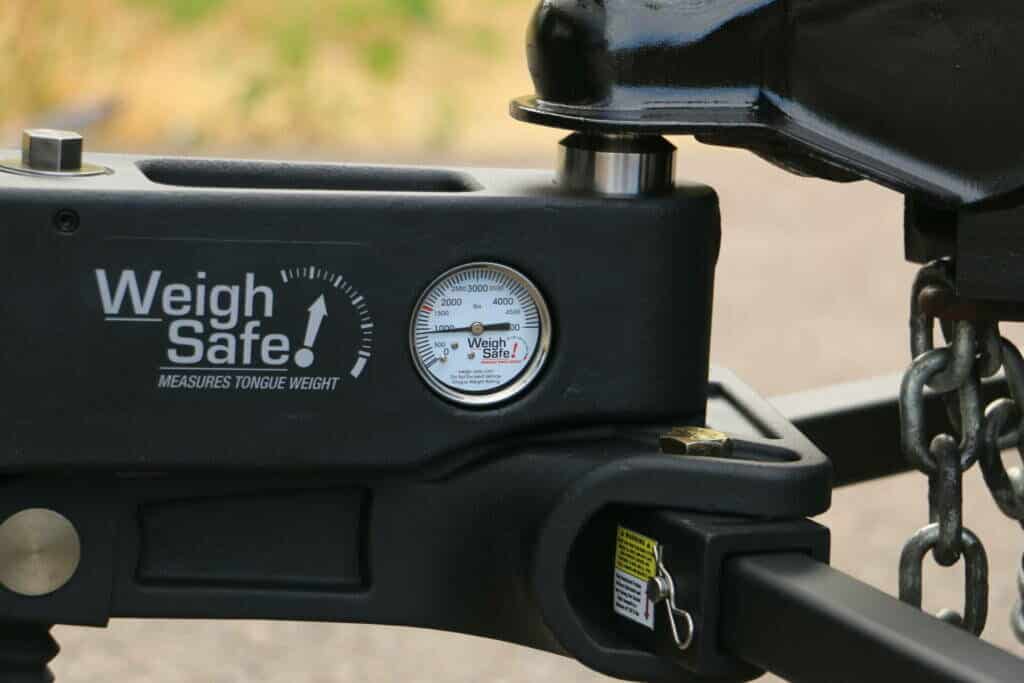 A LIVE Adjustment SYSTEM:
A LIVE Adjustment SYSTEM:
- eliminates the demand to remove the head associates for re-adjustment – resulting in a much easier and quicker installation, every time yous adjust
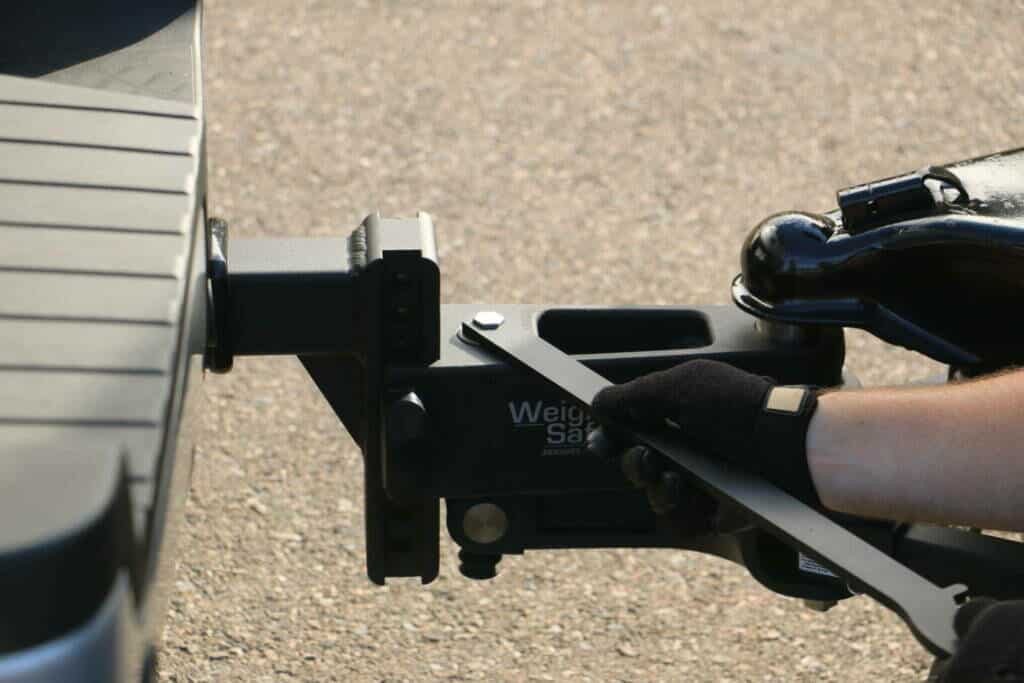 Piece of cake Superlative ADJUSTMENT:
Piece of cake Superlative ADJUSTMENT:
- features drawbars with 1" hole increments to provide more accurate summit adjustment (compared to competitors with 1.75" hole increments)
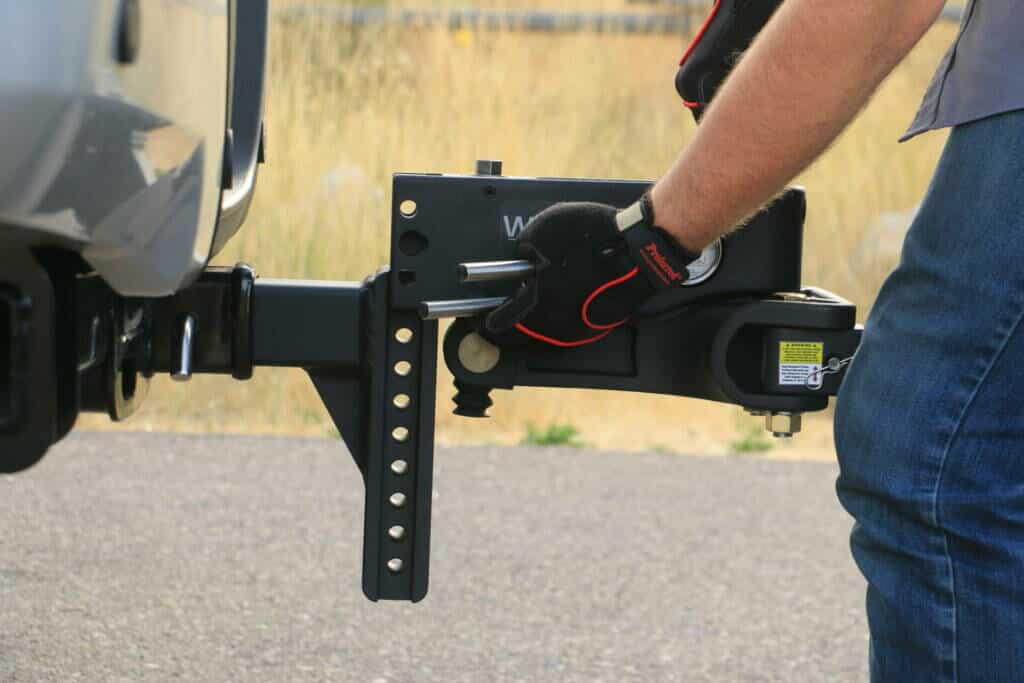 AN EXTENDED SLEEK DESIGN:
AN EXTENDED SLEEK DESIGN:
- generally gives you the ability to lower your tailgate (or open your liftgate) without the trailer tongue/jack interfering
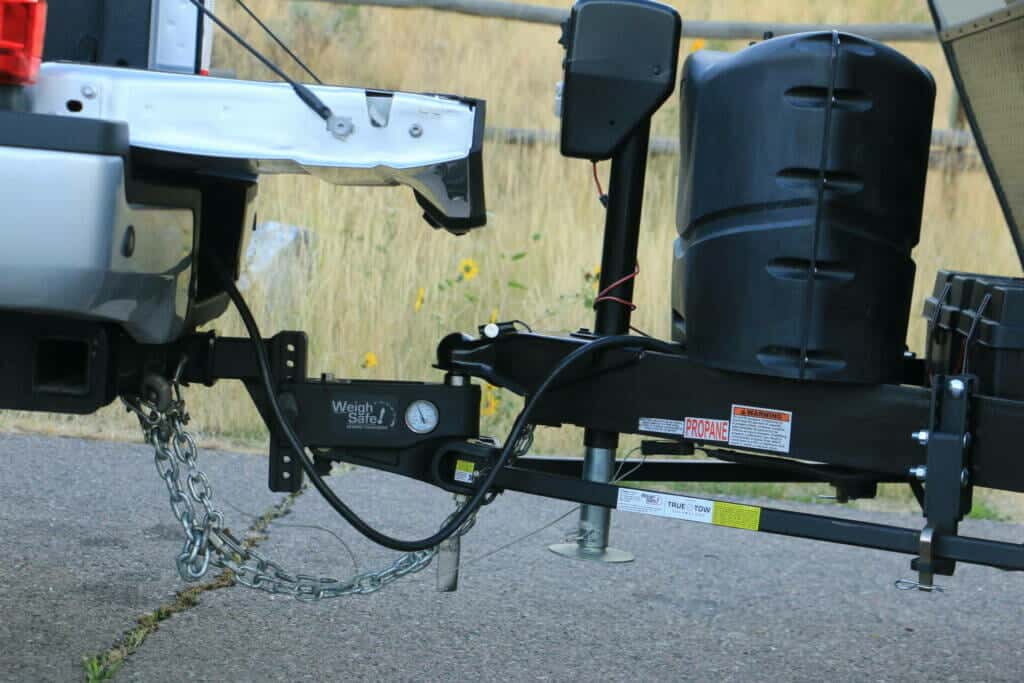 THE DTW TOOL:
THE DTW TOOL:
- calculates your required DTW. Access the DTW Tool on our website or on the Weight Rubber App right from your smartphone.
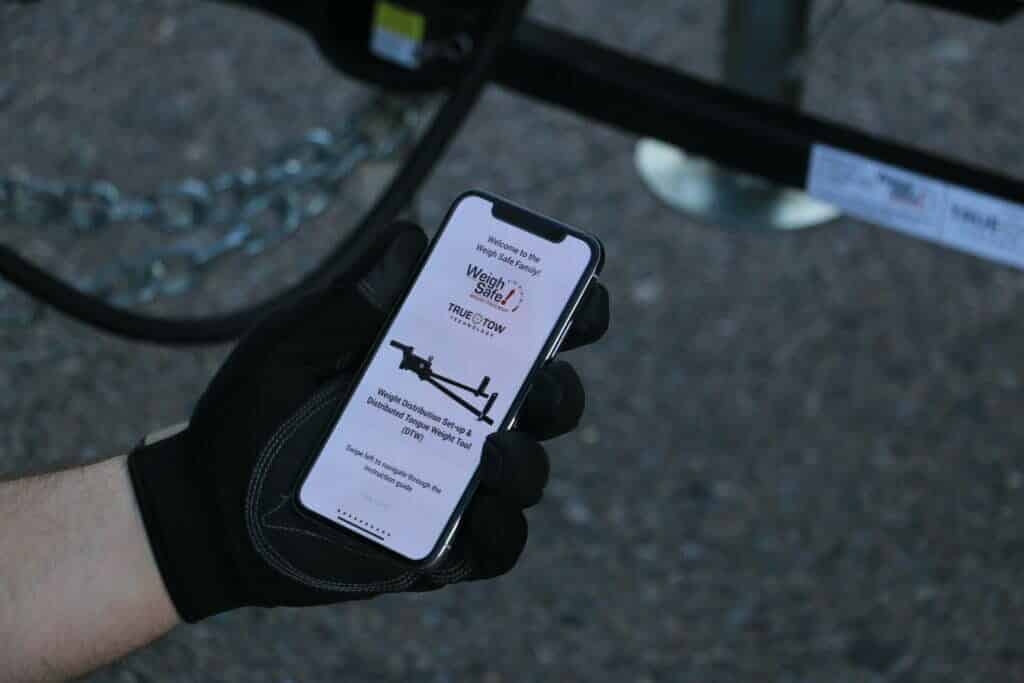 CONVERTS INTO Adjustable Ball MOUNT:
CONVERTS INTO Adjustable Ball MOUNT:
- converts into a basic adjustable brawl mountain. But add a steel slider and a steel ball retaining pin and yous'll have a 2-in-one hitch that covers even more towing needs and applications.
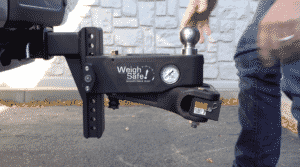
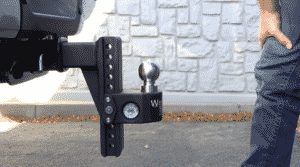
9 Steps to Installing and Adjusting Your True Tow Weight Distribution Hitch
Step #one: Download the WeighSafe App
- The WeighSafe App is a step-by-step guide – right at your side – to use every time you prepare your weight distribution hitch. Apply it every bit a checklist, to ensure that you are completing every step and making the proper adjustments for each dissever tow.


Step #two: Check to Brand Sure Yous're Ready For Ready-upward and Use
- Read the weight distribution hitch manual to be sure you are following all condom warnings and have all the correct tools and parts necessary for associates.
- Park your truck and trailer on a apartment, level ground in-line with each other.
Footstep #three: Install the Tow Ball
- Insert the correctly sized Weigh Safe Tow Ball into the designated pigsty within of the hitch Head Assembly .
- With the Tow Ball inserted, use the provided Shoulder Ball Pin and Lock Washer, and tighten the Hex Wrench until the bolt is completely tight and is sub flush with the confront of the Head Assembly . Torque to 30 ft-lb. Check out this video to see how easy it is to bandy out the tow balls.
Pace #iv: Suit the Head
- Level the trailer to exist parallel to the ground. This tin can be done past using a level, or past measuring the front and back of the trailer frame to the ground. Brand sure both the front end and the dorsum measurements are the same.
- Now that your trailer is level, measure from the ground to the superlative of the trailer coupler. With this measurement, insert the correctly sized Draw Bar into the receiver of your truck. Depending on what the height of your trailer coupler is, the Draw Bar may demand to be in the rise or drib position. Generally, the ball meridian should be 1 to ii inches above the coupler height.
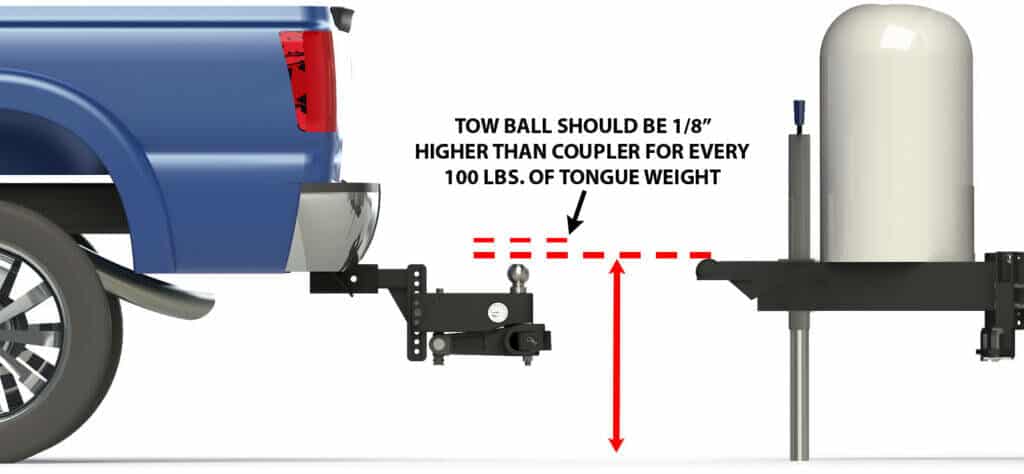
- Slide the Head Assembly onto the Draw Bar and insert the Lock Plate Central Associates (dual pins) into the right holes to gear up the ball pinnacle. Be sure to button the Lock Plate Key Assembly all the way in – until the pins are fully inserted and the lock tab is engaged. To check this, effort and pull out on the Cardinal Lock Associates , making sure that the Lock Tab is secure earlier towing. Here's a short clip on how to do this.
Pro Tip: For future reference, salvage your height fix-up onto the DTW tool on your Weigh Safe App . Input both of your drawbar positions (rise or drop) and how many empty holes are visible to a higher place the peak of the Head Assembly in the Draw Bar .
Stride #5: Install Trailer Brackets
Finding Trailer Bracket Location:
- Locate the Eye-line of where the Trailer Brackets need to exist placed past measuring from the center of the trailer coupler – along the trailer frame – and putting a mark at 32 inches on both sides. Securing the trailer brackets at the 32 inch mark volition put the least corporeality of stress on your trailer and hitch, providing the safest tow.
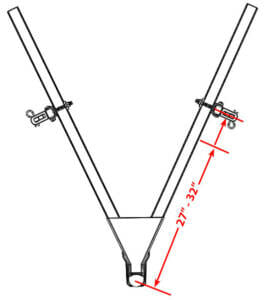
- Ensure that there are no brake lines, electric wiring, or gas lines in the way of the Trailer Brackets. If something is obstructing the placement of the Trailer Brackets, you'll want to reroute it to prevent any damage acquired past the Trailer Brackets.
- Pro Trip: In the rare case scenario where there may exist a frame member, propane mountain, or bombardment mount in the mode that can't be moved – the Trailer Brackets tin can be moved forward, closer to the trailer coupler, to a minimum altitude of 27 inches from the trailer coupler middle.
Installing Trailer Brackets Onto Trailer Frame:
- Place 1 of the Carriage Bolts through the summit pigsty in the Outside C Channel Subclass and align information technology with the top hole of the inside Flat Bracket. Slide on the Lock Washer and so thread on the Nut a couple of turns.
- Slip the brackets over the trailer frame and line upwards the summit bolt with the eye mark line for the previous step. Tighten the Nut until hand tight.
- Insert the second Carriage Commodities in the highest open up hole in the Outside C Channel Subclass under the trailer frame, and printing it through the corresponding hole on the inside Apartment Bracket. Slide one the Lock Washer and thread on the Nut until mitt tight. There should not be a gap betwixt the pinnacle and bottom railroad vehicle bolts and the trailer frame. If at that place is a gap larger than a ½ inch, it can cause damage to the trailer brackets.
- Use the socket end of the Lift Arm , or socket wrench, and tighten the nuts. Exist sure to alternate between the top and bottom nuts while tightening.
Setting Pinnacle of Spring Arm Platform:
- Slide the Leap Arm Platform into the Outside C Aqueduct Bracket and set up it to the correct acme. The ideal tiptop for the flat portion of the platform is 9 inches beneath the summit of the trailer coupler. This will allow the spring artillery to be horizontal with a trailer frame which will create the smoothest and safest tow.
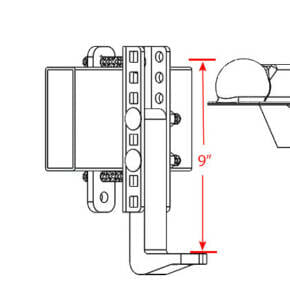
- In one case you take the Spring Arm Platform set to the correct height, insert two Carriage Bolts into the square holes in the Exterior C Channel Bracket that line up with the respective holes in the Bound Arm Platform. Press them all the way in and slide on a Lock Washer and thread on a nut on each bolt. Tighten to paw tight.
- Use the socket end of the Lift Arm , or socket wrench, and tighten the nuts. All trailer bracket bolts will need to be torqued to 65 ft-lb.
- Repeat these steps on the other side of the trailer frame.
- Pro Trip: In rare cases, if the atomic number 82 screw on the Caput Assembly bottoms out before you reach your target DTW, the Spring Arm Platform might need to be less than 9 inches.
Step #6: Gather the Spring Arms
- Insert the Spring Arms into the Spring Arm Sockets.
- Insert the Clevis Pin into hole, from the inside, to the outside of the hitch. (This is to allow easy access for the Cotter Pivot .)
- Secure the Clevis Pin with the Cotter Pin.
- Repeat these steps on the other side.
Pro Tip: Earlier each towing session, you'll need to ostend that the Spring Arm Socket Bolts are torqued to a minimum of 150 ft-lb, using a torque wrench. Alert: Because the Jump Arm Sockets are being compressed past Socket Bolts in the Head Associates , they are hard to twist. This is to help with sway command. Exercise not pound straight on the Jump Arm Sockets. This could cause them to chip or crack. Utilise the Spring Artillery as a lever to move the compressed Jump Arm Sockets .
Step #7: Make up one's mind your target DTW
- Start by backing up your truck to the trailer and and so lowering the trailer coupler onto the Tow Brawl . Lock the coupler and insert a prophylactic pin/lock for a secure attachment.
- Open the DTW Reckoner in the Weigh Safe App .
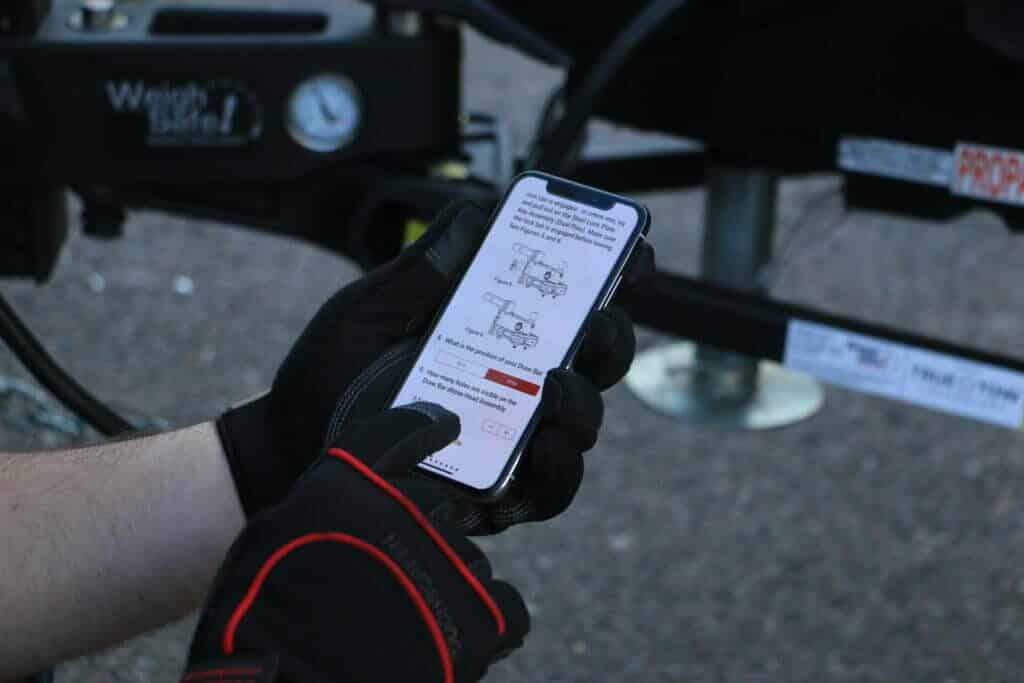
- Begin to input the following weights and measurements:
Gross Trailer Weight (GTW)
- This is the weight of your trailer, plus the weight of the cargo you've loaded onto it.
Natural language Weight (TW)
-
- This is the downwards force that the tongue of your trailer is exerting on your hitch.
- To measure your tongue weight, keep retracting the trailer natural language jack until it raises completely off the ground.
- Exist sure to measure out your trailer's natural language weight without the Leap Arm attachment.
- Your target tongue weight is ten% – 15% of your GTW.
- Aim to position your cargo then that your trailer's tongue estimate is reading within this range. Mostly, this is accomplished past putting about lx% of your cargo's mass ahead of the trailer axle and xl% behind.
Measurements : Swing out one of the Leap Artillery until the bar is perpendicular to the Head Assembly . This arm will be used equally a base of operations point to take your measurements. Always use the side of the Spring Arm closest to your truck because the within face up is in-line with the Tow Brawl .
- Truck Beam to Tow Ball
-
- In inches, measure out in a straight line from your truck'southward Rear Axle Center-line to the Tow Ball (0-70" max).
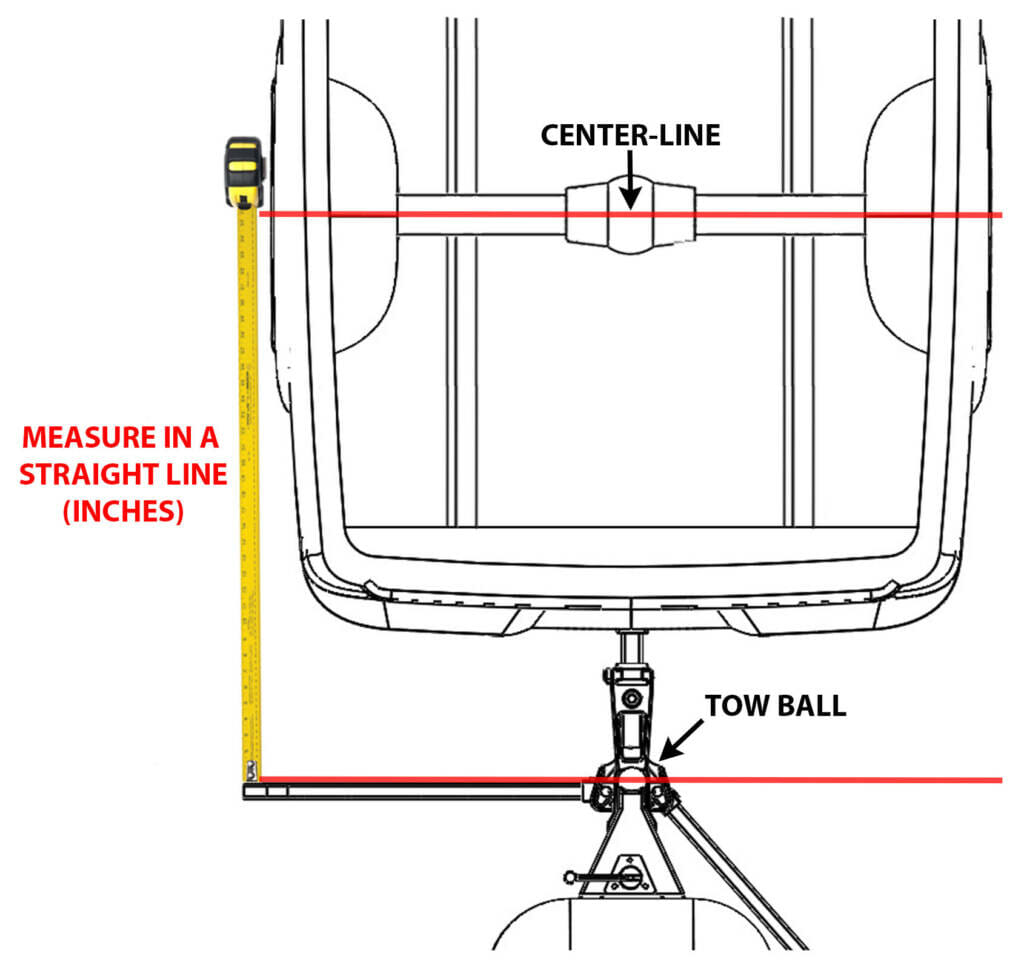
- Tow Ball to Trailer Brackets
-
- In inches, measure in a directly line from the Tow Ball to the the eye of the Trailer Brackets (24 – 32" max).
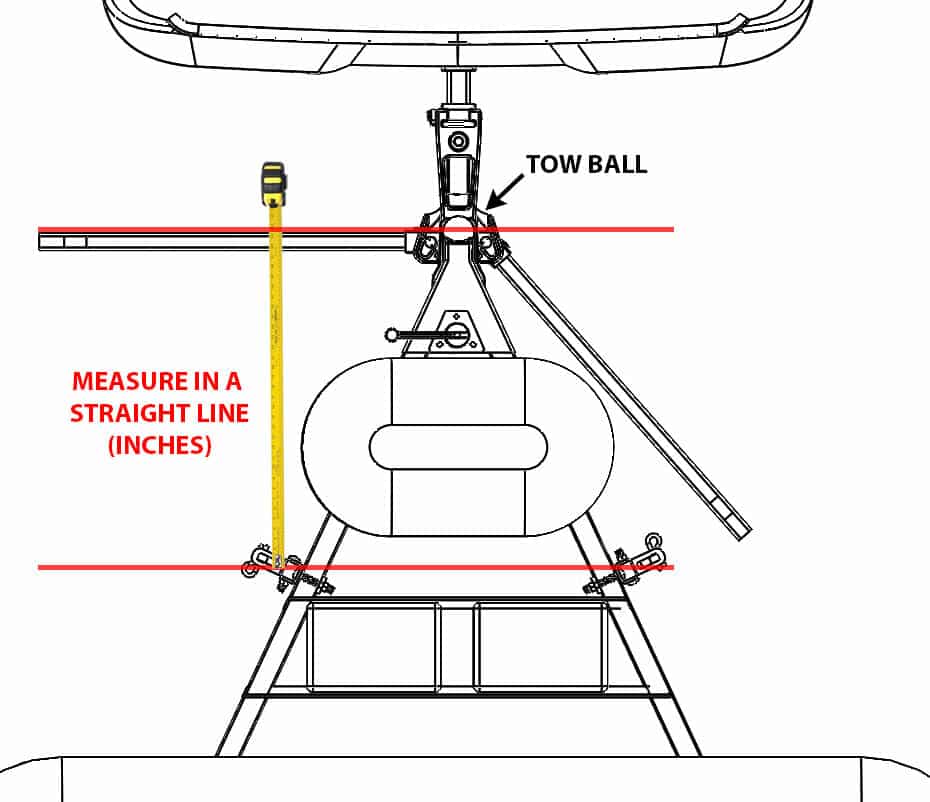
- Tow Ball to Trailer Beam(s)
-
- In inches, measure from the Center-line of your single Trailer Axle (or center betwixt multiple axles) to the heart of the Tow Ball .
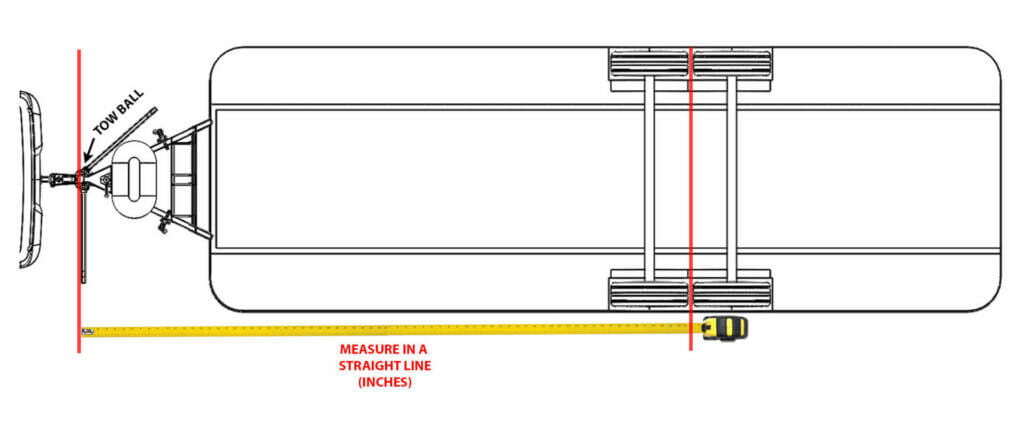
- Once you lot've inputted each weight and measurement, the DTW Calculator will populate your required DTW.
- Pro Tip: It's of import to note that your required DTW (Distributed Natural language Weight) will normally – but not always – read somewhere betwixt 2 to 3 times your initial TW (Tongue Weight) reading.
Pace #viii: Connect the Spring Arms
- Slide the Spring Arms onto the Spring Arm Platforms.
- Pro Tip: If you are towing a heavy trailer that's causing your truck to 'squat' – keeping you from being able to slide on the Bound Artillery onto the Spring Arm Platforms – y'all may have to utilise the trailer's tongue jack to lift both your truck and trailer until yous can lift the Spring Arms into place over the Leap Arm Platforms . If that doesn't work, y'all may need to use the Lift Arm .
- Employ the 50-fingers and the Fifty-finger pins to secure the Leap Arms onto the Spring Arm Platforms .
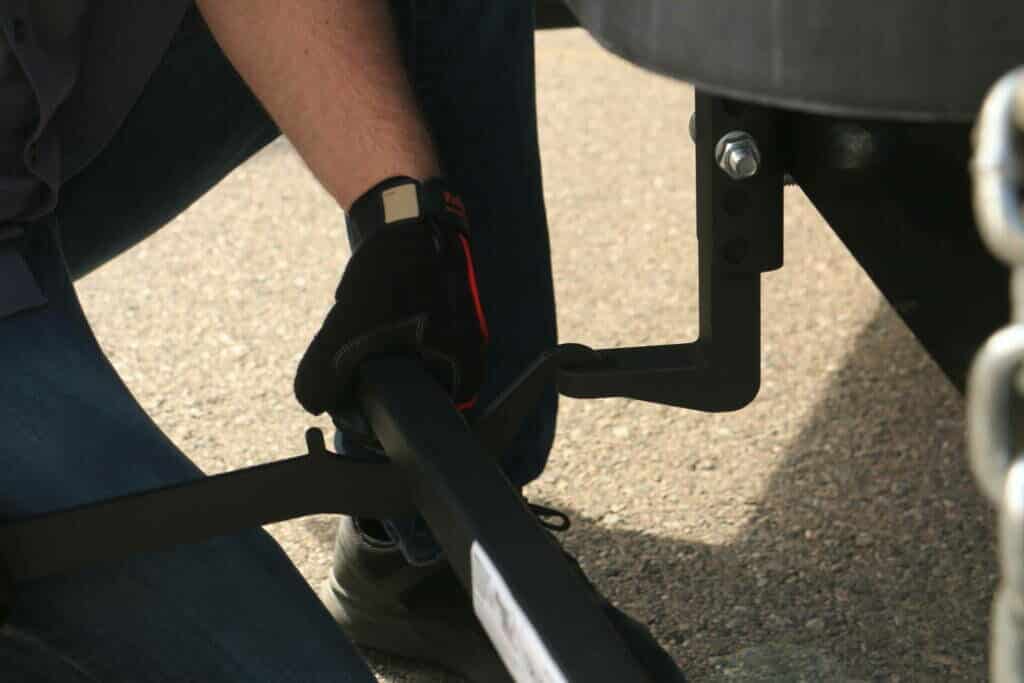
Footstep #9: Distribute Your Towing Arrangement
- Use the included Lift Arm (or a socket wrench, or a cross wrench) to tighten or loosen the lead screw until your natural language weight estimate reaches the required DTW.
- Turning it clockwise increases TW, and turning it counterclockwise decreases TW.
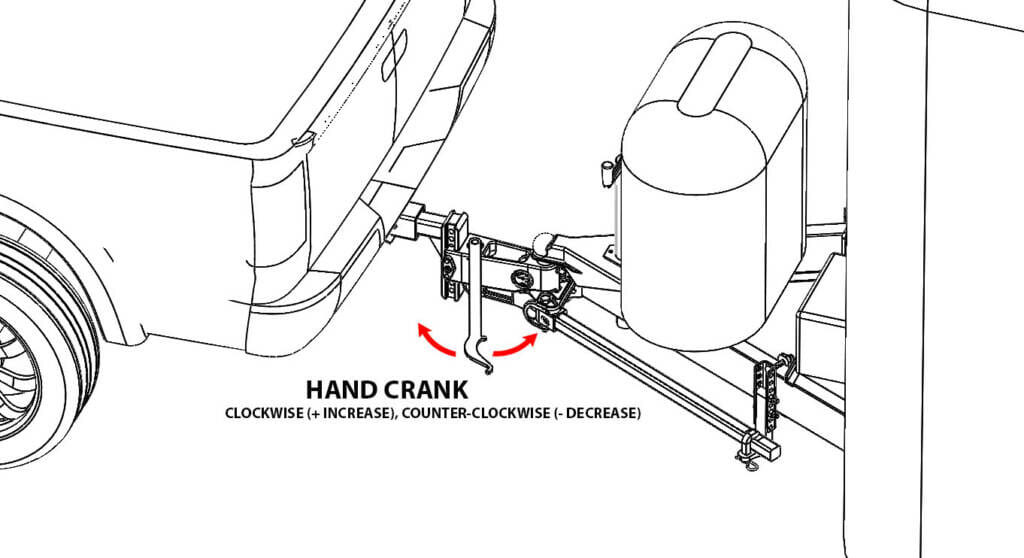
Benefits & Features of the Truthful Tow Weight Distribution Hitch
Before You Striking the Route
Condom towing means getting to know your equipment and understanding how to operate and maintain it. Here's a helpful checklist to go over each time you lot hit the road:
Towing Trip Checklist:
- Check your truck and trailer tires.
-
- Your truck tires may require higher pressure for towing, as recommended in the owner's manual.
-
- Your trailer tires may have dry rot or cracking, especially, if your trailer has been stored outside and/or hasn't been used for a season.
-
- Don't forget to check the wheel lug nuts on your trailer and truck are tightened to the specified torque.
- Check your oil, fluids, and brakes. Towing puts additional stress on your truck. So before heading out on a towing road trip, be sure your truck has:
-
- had a recent oil and filter change
-
- restriction pads with plenty of life remaining
-
- its engine coolant filled to the proper level in the reservoir
-
- plenty of transmission fluid
If your trailer has brakes, it's too a good idea to accept those checked, as well, and to keep the wheel bearings greased.
- Take a spare tire kit for your trailer. Make sure you have at least one spare tire for your trailer. You'll also want a lug nut wrench specific to your trailer's wheels, as well every bit a jack that will work properly with your trailer.
- Cantankerous your trailer'due south safe bondage. Don't only run them straight. Crossed chains are meant to class a 'cradle'. If the hitch was ever to fail, the tongue of the trailer would fall downward into the crossed chains, rather than digging into the pavement. The chains should accept enough slack to permit abrupt turns, merely not elevate on the road.
- Check trailer lights. Inspect the wires past mitt; they should be loose plenty to permit turns without getting asunder, but tight enough that they won't affect the road. Be sure the trailer's running lights, restriction lights, turn signals, and run a risk lights are all working properly.
- Verify hitch clearance. Measure from the lowest signal of your hitch to the ground – it should exist no less than 11 inches.
- Consider towing mirrors. If your trailer is wider than your truck, look into getting wide aftermarket tow mirrors to help yous see your trailer'due south bullheaded spots while driving and to assist rear visibility when backing up.
- Programme ahead for fuel stops. Y'all'll more often than not use more fuel while towing, and stopping at a pocket-sized, remote gas station is not so like shooting fish in a barrel with a big truck and trailer.
- Use wheel chocks. When unhooking the trailer from your truck, identify wheel chocks (sturdy, wedge-shaped blocks) in front of and behind the trailer's tires to ensure the trailer doesn't roll away when you release the hitch.
Using Safe Driving Techniques
In many cases, your trailer will weigh more than your truck. All that extra weight backside the truck will accept a huge impact on the truck's driving power. You'll need to acquire new driving techniques to ensure safety on the road while towing: Safe Driving Techniques For Towing:
- Let for longer stopping distances. Exist more attentive to vehicles stopping suddenly ahead of you when towing, and brainstorm braking sooner than if you weren't towing.
- Bulldoze in the right lane on highways every bit much every bit possible. This volition go far easier for you to get over to the shoulder if ever yous need extra stopping room or happen to have a tire blowout.
- Don't ride your truck's brakes on long downhills. Shift the truck'southward transmission to a lower gear to help slow the vehicle and take some strain off of the brakes. Applying the brakes at intervals to keep the speed in check (every bit opposed to constant application of the brake pedal) will help keep the brakes from overheating.
- Adjust trailer brakes according to load. For case, if your trailer is equipped with brakes, you'll want them set to employ a lot of force when towing a heavy load, but when the trailer is empty, the trailer's brakes need to be readjusted for that lighter weight, then the trailer's tires aren't locking upward and skidding.
- Consider Pinnacle: trailers tin be much taller than the truck, and so go on clearances in heed when pulling into gas stations or low bridge situations
- Take constant care to make wider turns at curves and corners. The trailer tires are more likely to hit or ride up over curbs.
- Use a lookout when backing upwards. Have someone exterior at the rear of the trailer while backing upwardly whenever possible. Even broad tow mirrors tin't provide all the visibility you may need, particularly in situations where there are other vehicles, objects, or people in close proximity.
- Check your route ahead of time. Some roads don't permit trailers on them, and certain roads also have weight, height, and width limits. Plan your route ahead of time to avert the hassle of having to backtrack to notice roads that permit your rig.
Afterward Your Trip: Steps to Disconnecting Your Weight Distribution Hitch
- Pull your trailer into the place y'all want it parked; most finer done on a flat surface.
- Set the parking restriction and put stops under the wheels of the trailer.
- Unhook the electrical cable, chains, and breakaway cable from your truck.
- Raise your trailer natural language jack until it starts to raise both your trailer and truck. Continue to lift until the weight is lifted off the ends of the Spring Arms , allowing you to hands pull off the Leap Arms course the Bound Arm Platform .
- Remove L-Finger pins and L-Fingers .
- Slide the Bound Arms out and away from the trailer frame to clear the Trailer Brackets when you lot lower the trailer tongue jack.
- Lower the trailer tongue jack until the trailer tongue is over again resting on the hitch (showing some tongue weight) and you can unhook the trailer coupler latch.
- Utilise the trailer tongue jack to lift the trailer off the Tow Ball and pull your truck abroad from the trailer.
- Unhook the Bound Artillery course the Head Associates and remove the Head Assembly from the Depict Bar.
- Store you True Tow Weight Distribution Hitch in a safe and secure location that is protected from conditions conditions.
Conclusion
Having superior driving control over your truck and trailer while towing, is essential. Adhere to these weight distribution guidelines for a safer, smoother ride, and complete towing peace of mind. Looking for more back up and tips on towing?? Browse our how-to videos , or experience free to contact united states of america with any of your questions. Nosotros're hither to assist!
Source: https://www.weigh-safe.com/towing-safety/complete-guide-to-towing-with-a-weight-distribution-hitch/

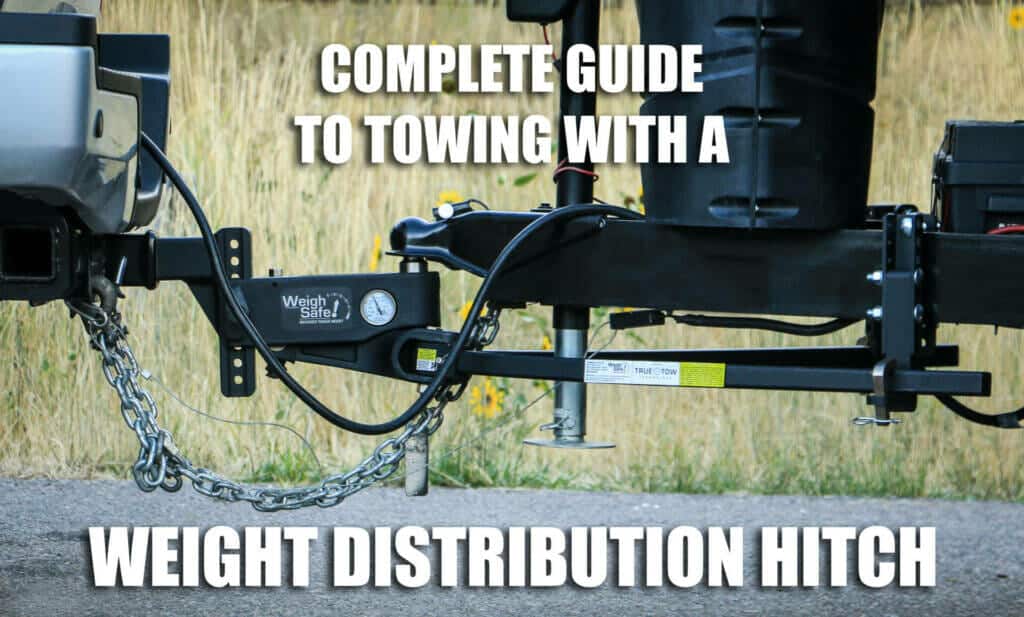
0 Response to "How To Properly Set Up An Equalizer Hitch"
Post a Comment